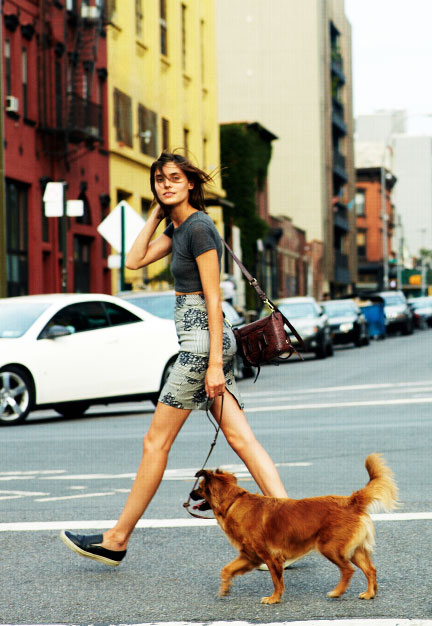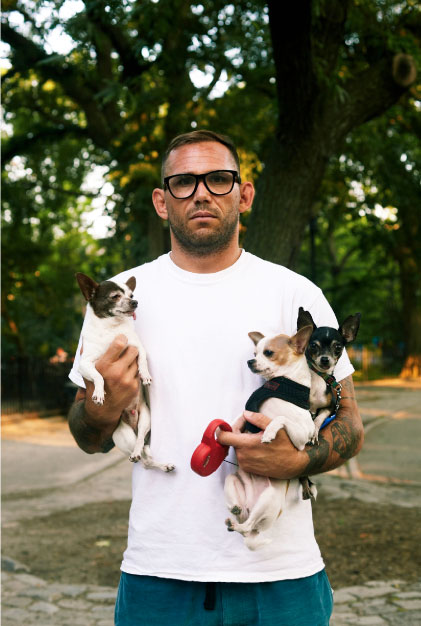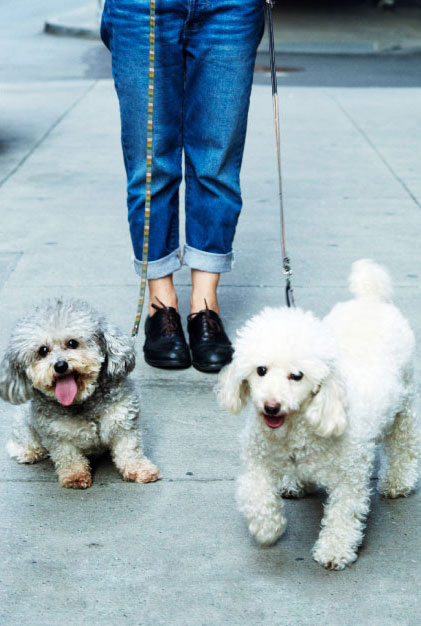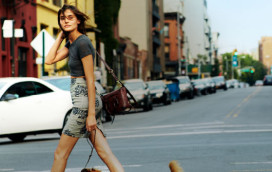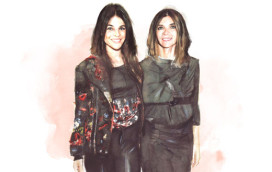When we first ordered (on the internet) our Cairn terrier, a diplomat friend of mine asked, “Where will you be sending him to school?” Thinking she was joking, I laughed. Who would have thought, a mere three months later, that Wilson (the aforementioned Cairn, who now travels freely across the Atlantic between London and Long Island) would be attending the most exclusive boarding school in the world?
The Dog House, situated in deepest Wales, not only educates the royal European canine community (who fly their dogs over in private jets from Geneva and Monaco), it also sends weekly updates and progress reports. Wilson came back with a four-page report card (“He excels at swimming” it read, “but is a bit food-centric”), a class photo – and a rather large bill. He also returned with a manicure, pedicure and of course, a blow-dry.
Dogs are the new children. The current generation of twentysomethings has been labeled “Generation Rex” due to the enormous proliferation of dogs in cities such as New York, London, Moscow, Beijing and Paris. The American Centers for Disease Control and Prevention recently published data that suggests young women are forgoing childbirth in favor of “doggy children”. And while the number of live births per 1,000 women aged 15-29 has plunged by nine per cent, research by the American Pet Products Association shows that the number of small dogs in the US has risen from 34.1 million in 2008 to 40.8 million in 2012. Rich kids like Paris Hilton and Petra Ecclestone (who bought an $83m mansion in LA so her dogs could have more space) might have kickstarted the trend, but today celebrities from Natalie Portman to Rihanna to Marc Jacobs are never seen without a furry accessory.
Dog ownership has grown dramatically around the world, including in China, where panda dogs – actually fluffy chows whose coats are clipped and dyed to make them resemble pandas – are all the rage. “We used to eat dogs,” says Hsin Ch’en, a pet shop owner in Chengdu. “Now we all want one as a companion.” In Japan, where strollers for dogs are as common as leads, some pooches even have their own closets in their owners’ apartments full of changes of outfit – including wetsuits for those heading for the beach. In post-Communist Russia, dog ownership is a sign of affluence: billionaire Andrey Melnichenko’s superyacht has even been specially approved as a quarantine facility, enabling him and wife Aleksandra to take their beloved Maltese, Vala, to foreign shores without having to negotiate the bureaucracy encountered by lesser canines. Brazil is the home of one of the world’s first dog restaurants, Pet Delícia in the Copacabana neighborhood of Rio de Janeiro, which even offers a home delivery service.
Dogs have moved from dog houses and kennels to share our most intimate spaces, not only in city apartments, but increasingly also in hotels and offices. “When I first moved to New York you simply didn’t see dogs,” says art consultant Jill Capobiano. “Now you have luxury dog hotels, dog cafés and dog fashion. It’s acceptable to take your dog everywhere, even to dinner parties. When I was growing up dogs were kept outside. Now they sleep, if not in your bed, then in one made especially for them.”
We are no longer dog owners but dog “parents”, now choosing such civilized names for our canine companions as Wilson and Ava rather than Fido or Lassie. “For all the seemingly unbridgeable distance between them and us, dogs have found a shortcut into our minds,” wrote Adam Gopnick in The New Yorker in 2011. “They live within our circle without belonging to it: they speak our language without actually speaking any, and share our concerns without really being able to understand them.”
We treat our dogs exactly like children, if not better, not only investing in interactive feeding bowls to stimulate their brains while they eat, but even going to the trouble of having their intelligence tested by canine cognition experts. Brian Hare, an evolutionary anthropologist from Duke University who studies dogs can even tell you (through one of his nifty personality tests) if your dog is a “socialite”, a “maverick” or a “renaissance dog” (just plain stupid is not a category). In Mr Hare’s book, The Genius of Dogs – co-written with his wife Vanessa Woods – he says, “Natural selection favored the dogs that did a better job of figuring out the intentions of humans”. Of course my dog Wilson knows when I’m grumpy (and moves to another part of the living room). I haven’t tested his IQ yet, but I have sent him on a social skills course.
When my children were small, I often struggled to find babysitters. Today, dogs not only have “dannies” (dog nannies, some of whom even move in to toilet-train) and sleep-away camps, they also enjoy a whole raft of stimulating activities including pet socialization classes, iPad and iPhone lessons (taught at School for the Dogs in New York), doga classes (dog yoga) and dog-walking services that include regularly updated digital maps of the dog’s movements.
Some dog owners can’t be parted that long from their pets. “Let someone else walk Wiley? Never!” says the Manhattan-based former model Bronwyn Quillen. “Wiley [an adopted German shepherd mix] and I go to the park every day for one to two hours. We have a running commentary and Wiley can even spell. When we spell out w-a-l-k he sort of gets excited but when we spell b-e-a-c-h, he goes mad.” Wiley was a shelter dog, which Dog Snobs (or “Dobs”) rate above all others. “There are four categories of dog owner,” says Quillen. “First there are people who buy multi-poos – yorkipoos for example – from pet stores, which are basically mutts. There are those who buy golden retrievers and labradors, which are so overbred they’re not really dogs any more. One rank above that are people who spend money on a good breed. But at the top of the tree are people like me who get a rescue animal.” Wiley knows where he belongs in the family – he is top dog.
“Dogs are simply more reliable than people. I’ve certainly never seen any statistics on dog divorce,” says writer Pamela Redmond Satran, author of Rabid: Are You Crazy About Your Dog or Just Crazy? “I see plenty of helicopter dog-parenting and dogs in snuggly carriers and strollers around Manhattan.” (One pet-owner mentioned in the book spent $15,000 on a specially-made Cartier dog necklace.) Political correctness has of course edged its way into dog life, too. “Can you imagine what would happen if you said, ‘I don’t like my dog?’” she says. “That’s even worse than saying, ‘I don’t like my children’.”
Canine companions also offer endless shopping possibilities. Amy Harlow, a former model and the founder of Wagwear in Manhattan, sees “dogcessories” as the newest fashion growth area. “We’re all design-mad these days,” she says. “When I started my business in 1996 I couldn’t even find a decent lead. Now we think of dog paraphernalia in the same way we think of sunglasses or belts.” Harlow’s bestselling product is the Boat Canvas Carrier ($114), which allows owners to take their dogs with them wherever they want to go. “We’re just as paranoid about dogs now as we are about children,” she adds.
In Paris, jeweler Karin Fainas Martin, founder of Puppy de Paris, creates palatial embroidered dog beds that cost around $15,000, and gold water bowls that will set you back around $12,000. “Why are we all dog mad? In my opinion we are either prolonging family life or delaying childbirth,” she reasons. “Dogs are essentially a continuation of ourselves. In Paris, women think, ‘I am going to walk my dog now. What shall he wear?’”
We know dogs have feelings and dream just like we do. I would go so far as to say they are even artistic. Wilson is not only the inspiration for my own artwork (which he regularly interacts with), but he is welcome in most London galleries. And why shouldn’t he be? As the part-time Cambridge University professor Hardin Tibbs says, “Dogs are intuitive and empathetic, highly attuned to human emotions and feelings. So it is natural for us to ask the question, ‘What does art mean to dogs?’”
